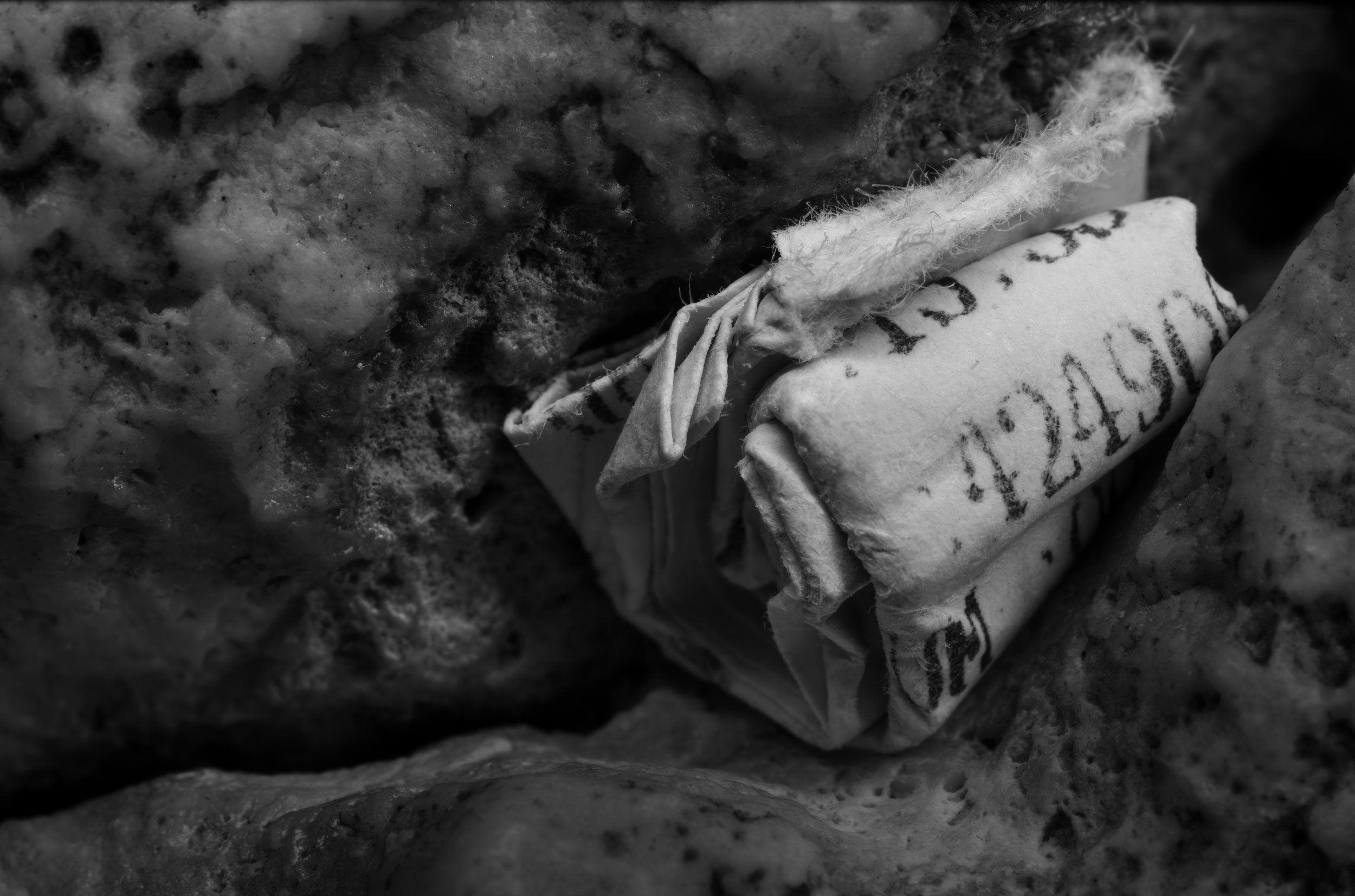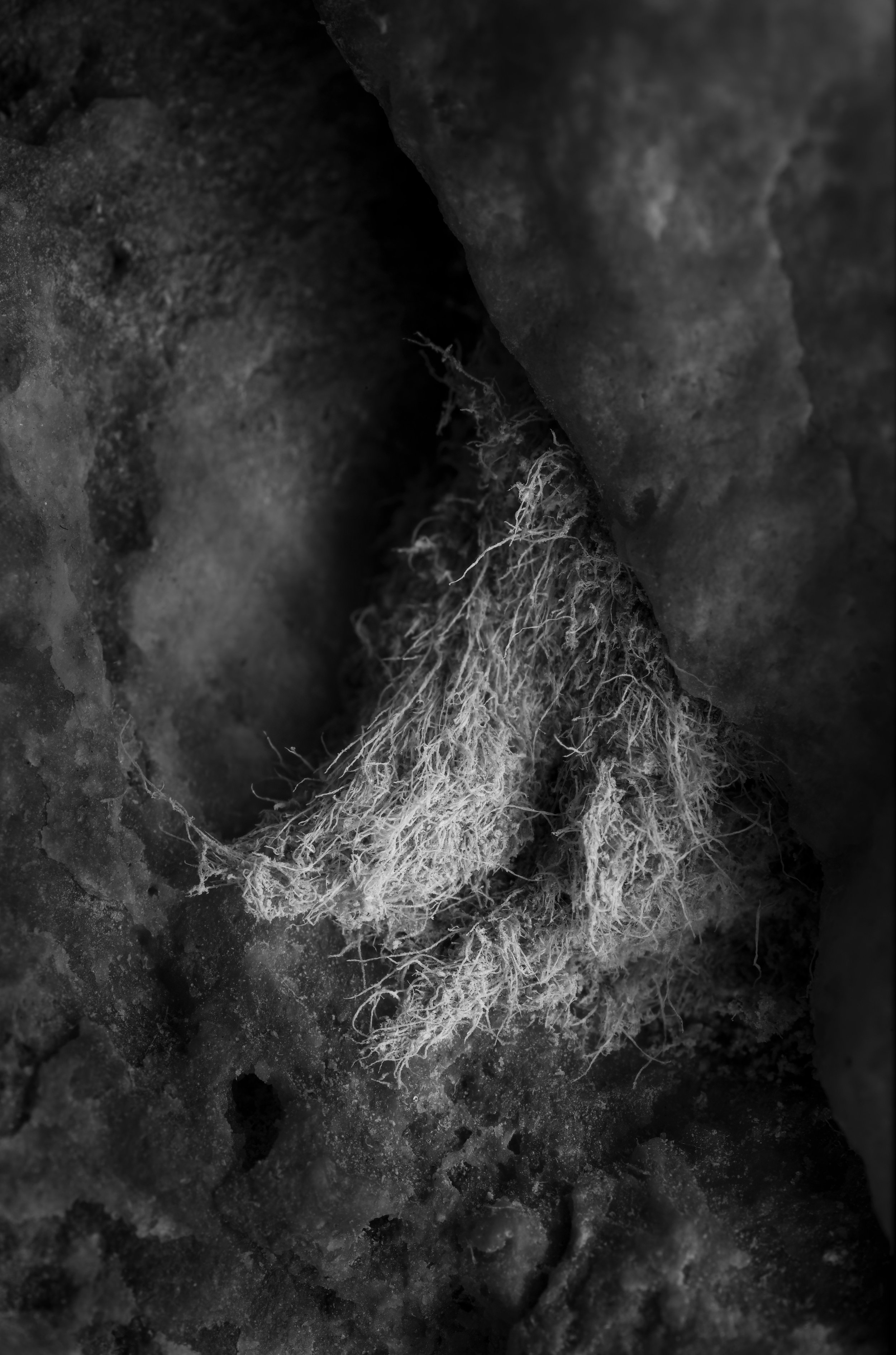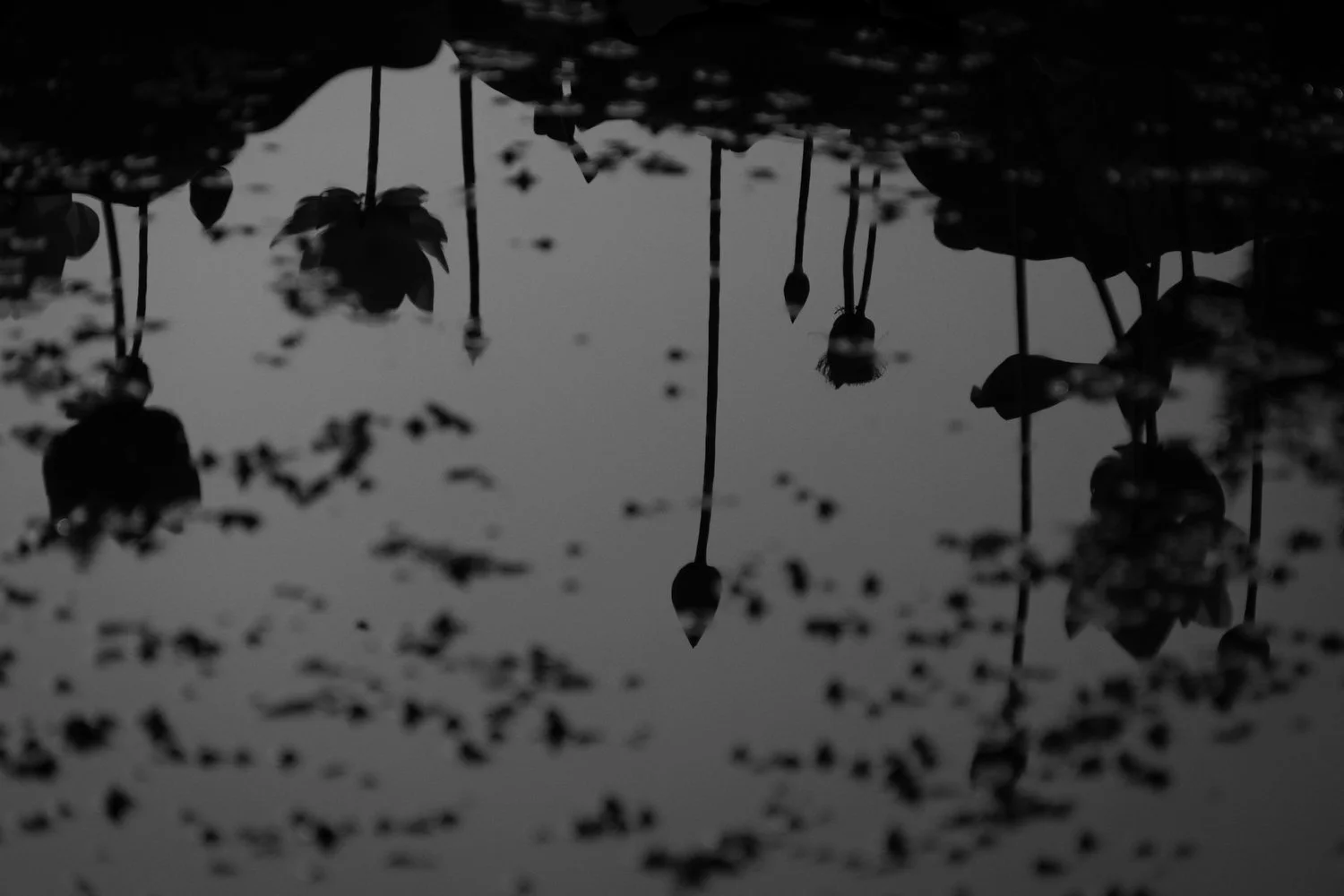III
Chrysalis
Chrysalis presents a rare, never-before-seen view of the hidden world of the notes placed inside Jerusalem’s Western wall.
Made between 2020 and 2023, Barak’s photographs explore the power of human connection to Jerusalem’s most sacred Jewish place, the resilience of the human spirit, and the transformative power faith has during the COVID-19 pandemic uprise and long after it has faded.
The Western Wall, also known as the Wailing Wall, is an ancient limestone wall in the heart of the Old City of Jerusalem, Israel. The wall was once part of a comprehensive series of renovations initiated by King Herod between 20 and 18 BCE on the Temple Mount, the site of the original First Temple.
The First Temple, built by King Solomon in the 10th century BCE, was destroyed in 586 BCE during the Babylonian conquest of Jerusalem. In 538 BCE, during the reign of Cyrus the Great, the Jews who had been sent into captivity following their defeat by Nebuchadnezzar returned to Jerusalem and rebuilt the Temple atop the ruins. Scholars date the completion of the Second Temple to 516 BCE, but some Jewish sources date it much later, to 350 BCE. Until the days of Herod, the Temple Mount was relatively small and extended over the natural area of Mount Moriah in Jerusalem. To glorify his name and please his Jewish subjects, Herod, a great builder, refurbished the Temple building and expanded the Temple compound to the canyons and surrounding mountains by adding a 90-meter square plaza on the southwest side. He erected four enormous retaining walls and a complex of arches and vaults between the walls and the mountain to support the sizable structure. The Western Wall, measuring 488 meters in length, is the longest of these supporting walls. The Second Temple, the jewel of King Herod’s kingdom, was destroyed during the Jewish-Roman War in 70 CE. Among the ruins of the magnificent complex remained a portion of the western retaining wall of the Temple Mount.
Over time, this remnant became a place of worship in its own right. From a letter discovered in the Cairo Genizah, we know that Jews prayed by the ruins of this retaining wall from as early as the 11th century, and by the 14th century, pilgrims to the Holy City had established the Western Wall as a prayer site. The 12th-century traveler, Benjamin of Tudela, mentioned the practice of Jewish pilgrims to the holy city carving their names into the wall’s sacred stones. He noted a similar practice at another popular pilgrimage site, Rachel’s Tomb, where pilgrims would “write their names on the Kotel.” Pilgrims and travelers used paint, chisels, and hammers to mark their visit to the holy sites.
Today, visitors to the Western Wall can still make out some inscriptions on the stones high up on the wall. A more common sight is the colorful pieces of paper that fill the crevices between the first rows of the enormous dressed stones. When did the practice of inscribing and writing directly on the stones cease, and did the tradition of leaving notes begin?
The prohibition against carving directly into the stones dates to the British Mandate (1918-1948). It was initiated by a dispute over prayer customs at the Western Wall. The British stopped the erection of a partition at the wall, which led to a violent Zionist demonstration. In light of the events, the League of Nations appointed a special committee to review the status quo at the site. During the committee’s deliberations, the matter of the inscriptions on the stones was brought up repeatedly. Just before the committee’s visit, many inscriptions were erased from the wall since, by that time, such graffiti was considered vandalism. Some expressed incredulity at the practice of Jews carving their names into the stones at a place held to be the holiest site for the Jewish religion. David Yellin, an educator, researcher of the Hebrew language and literature, politician, and one of the leaders of the Yishuv, was quick to disclaim the custom, saying, “As we view things today, we find this practice to be inappropriate for this sanctified and respected place.”7
Many of the special committee’s recommendations regarding the Western Wall were controversial, such as forbidding shofar blowing or placing benches at the site. However, on the subject of writing on the stones, all parties concerned agreed that this practice should be banned, each group for its own reasons. The Supreme Muslim Council, under the leadership of Mufti Muhammad Amin al Husseini, saw the inscriptions as a Zionist attempt to claim ownership of the Western Wall as a prelude to taking over the Haram al-Sharif, the Noble Sanctuary, which includes the Al-Aqsa Mosque. The Zionists believed the Western Wall should become a respected national site and be cleansed of inappropriate practices such as begging and graffiti. Representatives of the ultra-Orthodox Agudat Israel went so far as to call the practice “blasphemy.” The Mandate authorities feared a “violation of the status quo,” even though the inscriptions were an ancient, not a new custom.
In those days, visitors to the site, unaware of the ban, continued to try to write their names, but, to their surprise, they were arrested by the police and accused of vandalizing an antiquities site. The diary of Rabbi Yitzhak Avigdor Orenstein, the rabbi of the Kotel, provides a first-hand account of these events in the 1930s. The rabbi disapproved of the custom, alongside the Chief Rabbinate, who, in the 1930s, issued a call to the general public to respect the Western Wall and refrain from such irreverent acts. Among the behaviors the rabbinate objected to were bringing benches, carpets or mattings, chairs, curtains, screens, etc., and writing on the stones of the Western Wall. All at once, a centuries-old tradition was deemed strange and inappropriate.
Leaving notes at the Western Wall was a relatively new custom and presumably originated with the Ashkenazi immigration to Jerusalem at the end of the 19th century. It was just one element of the paper existence that characterized the city’s Ashkenazi community of those times, which also included “Kvitalach” (a card game similar to Twenty-One played in some Ashkenazi Jewish homes during the Hanukkah season), Pashkevils (broadsides or posters placed in the public place in Orthodox Jewish neighborhoods), promissory notes, “paper money” or coupons for specialty housing, telegrams, and mail, as well as a magnificent printing industry that boasted various newspapers, calendars, holiday greeting cards and more.
Ashkenazi Jewish circles embraced leaving notes instead of carving inscriptions into the stones, while Jerusalem’s Sephardi Jews were less inclined to adopt the custom. Even placing notes seemed inappropriate among Jerusalem’s educated circles at the beginning of the 20th century. Like the carved inscriptions, these were “untouchable customs,” the Russian scholar and editor Abraham Moses Luncz wrote, “that commit a great sin against the sanctity of the place.” Nevertheless, as time passed, inserting a note between the Western Wall's stones became an accepted practice. This format’s virtues are its ease and the fact that it does not deface or damage the ancient stones.
For many people, writing a note to be placed among the stones at the Western Wall is a profound, personal, and meaningful practice. Bound up in the physical act of writing a private prayer or request on a small piece of paper, folding it up, and placing it into a crevice in the surviving remnant of the ancient Temple Mount is a deep spiritual intention between the worshiper and the hallowed place where they keenly feel God’s presence.
There is no particular format or style for writing a note that will be placed on the Western Wall. The notes and texts are silent prayers from the heart, expressing one’s most intimate thoughts and feelings. They can be a single word, a few words, or many. They can be written in any language, on a scrap of paper ripped from a notebook, on a bus ticket, or even on paper currency. The practice has become widespread for Jews and non-Jews alike, and it is common to see people from all beliefs participating in this tradition.
In recent years, visitors to the Western Wall have developed methods to increase and preserve the lifespan of the precious notes they embed in the wall’s interstices. Some wrap their notes in plastic, tin foil, or casing to protect them from the weather.
The exact number of notes placed at the Western Wall over the years is unclear, yet some estimate the annual number to be more than a million.10 Several online services offer the option, for those who cannot visit in person, of printing requests sent by email, fax, or text message, which are then placed on the wall. According to the official website of the Western Wall, as of 4:43 a.m., April 2, 2023, the count for notes received by this service stands at 846,176.
The wall’s capacity to contain these notes is limited. The spaces between the stones fill up every few months, and eventually, notes start to fall from the cracks. To prevent this from happening, some use chewing gum to secure their notes. To deal with the issue of the limited interstitial space, it was decided that notes would be cleared from the wall twice a year, before the holidays of Rosh Hashanah (the Jewish New Year) and Passover. The rabbi of the Western Wall and his assistants use sticks to remove the notes from the crevices so as not to damage the stones. Out of respect to those who placed the notes and to prevent the desecration of notes presumed to contain the name of God on them as part of the personal prayers, the papers are collected and transferred to a genizah, a storage area designated for the temporary safekeeping of worn Hebrew-language books and papers before their burial at the cemetery on the Mount of Olives. Nevertheless, some notes remain in their place, eluding the cleaning and burial. It may be attributed to their size, placement in the wall, luck, or perhaps because their wishes have yet to be fulfilled.
I will always associate my first religious experience with a memory of my grandfather.
In 1990, when I was in the third grade, my quite formidable figure teacher gave me a homework assignment that she specifically said she would question me on in our next class. I was determined to do well and spent the entire week preparing. The next week, we had a 10-minute recess before the class began. I was very nervous and wanted to review my homework one last time. I reached into my school bag to take out my notebook with my homework, yet it wasn’t there. I was gripped with fear. How would I stand before my schoolmates and teacher and tell them I had lost my notebook with the homework assignment? I felt the ground giving way beneath my feet.
For some reason, I chose to pray to God for help, even though my family was not particularly observant. Not wanting the other children to see me, I went to a corner of the schoolyard. I didn’t know how to pray, so I closed my eyes, placed my hands together, and whispered a silent personal prayer. When I was done, I heard my friends calling to tell me that my grandfather was at the school and was looking for me.
He came towards me, smiling, handing me my missing notebook while saying, “I believe you left it at home, and I thought you might need it.” I was completely overwhelmed as my grandparents lived on the other side of the city, nowhere near our house. I took the notebook and gave him the biggest hug I could find. He left the school, and I returned to class, dumbstruck by what had just happened and the importance of fate in my life.


























